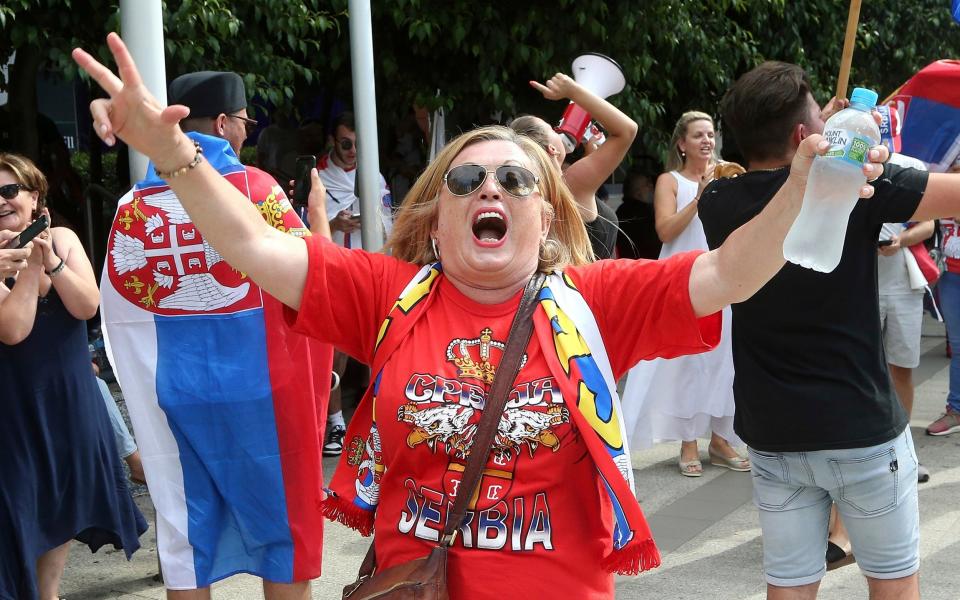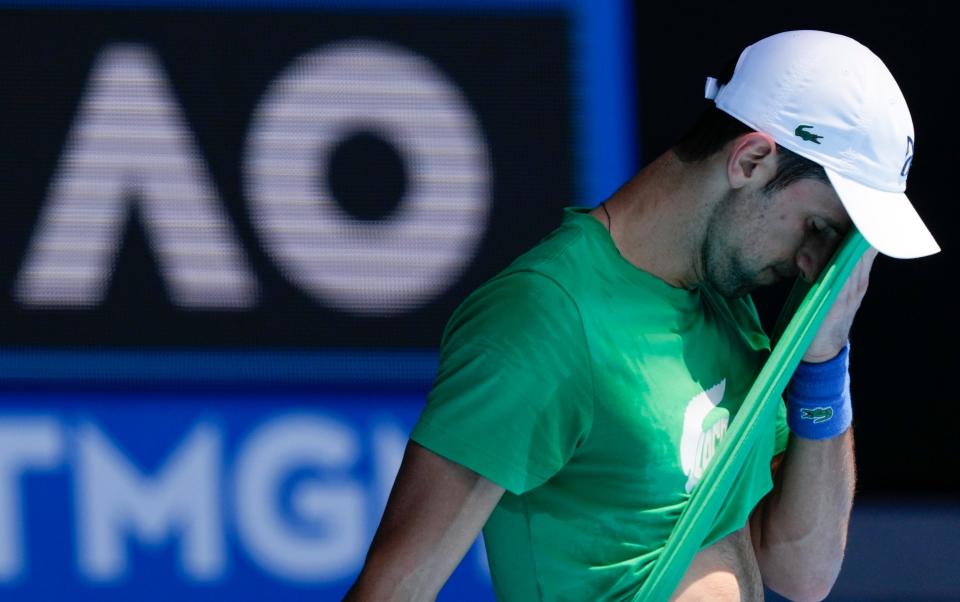Australian Open has descended into chaos - and the disruption might just be beginning

Imagine staging a play where, as the cast assembles for the dress rehearsal, nobody has any idea whether the leading man will even show up. This is akin to the position that Craig Tiley and the rest of the Australian Open team find themselves in.
Many people will say that it serves Tiley right. As TA’s chief executive, he was the man who originally pressed for the inclusion of unvaccinated players with medical exemptions, suggesting that their presence "went to the heart of the Open's viability".
But Tiley could hardly have imagined that the uncertainty over Novak Djokovic’s participation would continue until the eve of the Australian Open itself. As Andy Murray observed on Friday evening, the whole saga “just seems like it's dragged on for quite a long time now”. And while tennis might have received untold publicity from Djokovic’s legal wranglings, precious little of that has focused on the court.
One decision that Tiley has already made is to schedule Djokovic’s theoretical first-round match against fellow Serb Miomir Kecmanovic on Monday, denying him the possibility of an extra 24 hours grace in which to challenge his latest deportation order. (Tiley could have put Djokovic on Tuesday if he had wanted to be helpful, but this would surely have triggered further accusations of favouritism.)
An order of play was expected to be published before midnight on Friday, UK time. Because of arcane rules, that piece of paper will have consequences for the rest of the field. Rather than a reshuffling of the draw, with three seeds being shifted to face new opponents, the possible withdrawal of Djokovic’s name would now only affect one match.
Assuming that the federal government win their case on Sunday, and Djokovic is denied a chance to defend his title, this would become a straight swap. A “lucky loser” from the qualifying tournament – someone like Roman Safiullin, who was eliminated by Britain’s Liam Broady here on Friday night – would come in to face Kecmanovic.

There are disadvantages to this outcome, in that it unbalances the draw. Matteo Berrettini – the seventh seed from Italy – would suddenly be the highest-ranked player in the top quarter, with a terrific chance of reaching his third major semi-final. Still, this is probably the lesser of two evils, when compared with a wider reorganisation of matches.
It is possible, of course, that Djokovic will succeed in escaping the Australian government’s dragnet for a second time. In this case, the draw would go ahead as originally intended. The only unusual quirk would be Djokovic’s progress from a hearing on a legal court on Sunday to a best-of-five-set encounter on a tennis court the following day. Oh, and the fact that his preparations for a major would have been thoroughly undermined.
Whatever happens, expect the Australian Open to experience further disruptions. The strength of feeling provoked by this whole saga is certain to spill over in some form.
Should Djokovic make it onto the court, the level of crowd hostility would surely exceed anything he has previously encountered at a grand-slam tournament. Should he be ejected from Australia, police will be ready for demonstrations by outraged fans. Melbourne’s large Serbian community is estimated to number some 80,000 people.
The fallout could well continue throughout the tournament, with Tiley’s own job on the line. As chief executive of Tennis Australia since 2013, he has transformed this tournament, and stands alone as the only convincing figure in the entirety of tennis administration. (This is a uniquely poorly run sport.)
But the efforts Tiley made to smooth Djokovic’s entry into Australia have been exposed as a major misjudgement. He fatally underestimated the amount of ill-feeling towards unvaccinated athletes in this country, after almost two years of draconian lockdowns, and over-invested himself in this one case.
Such is the fear and loathing surrounding Melbourne Park that this year’s Australian Open will never reclaim its customary status as “the happy slam”.
Even so, this remains a nation of optimists, and the hard-working folk at Tennis Australia will still be telling themselves that everything might be alright on the night.

 Yahoo Sport
Yahoo Sport 





































